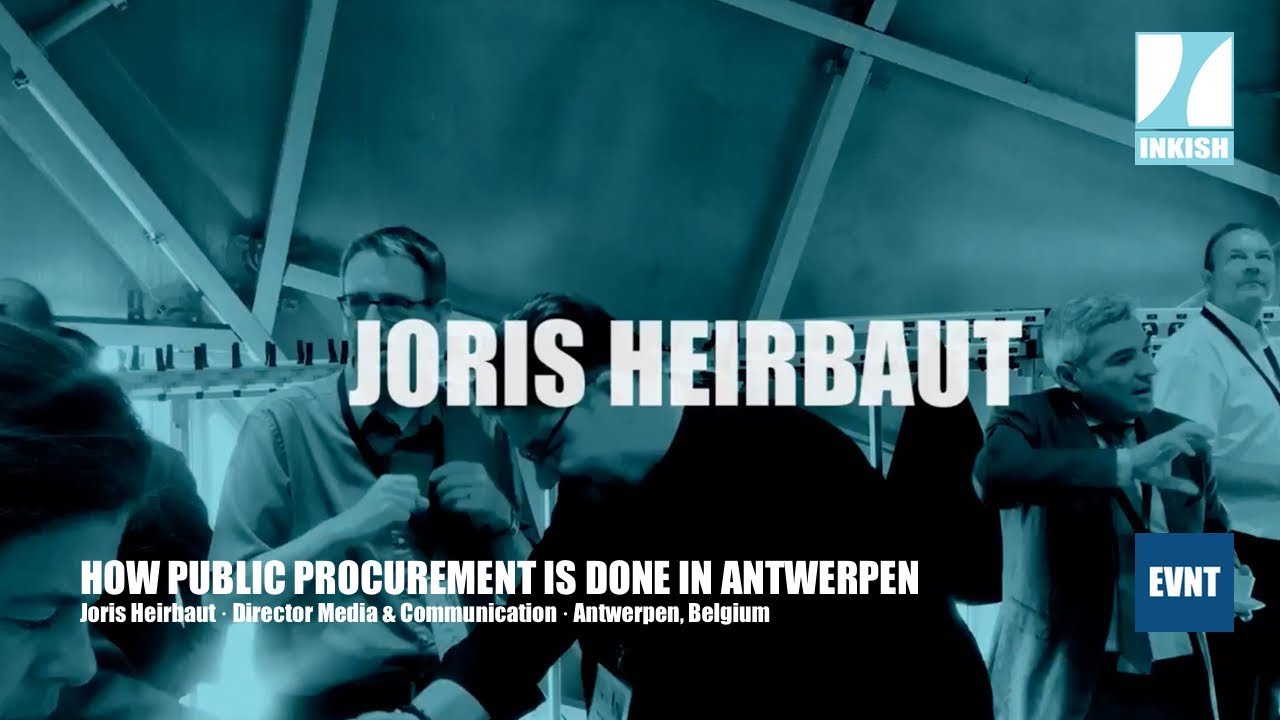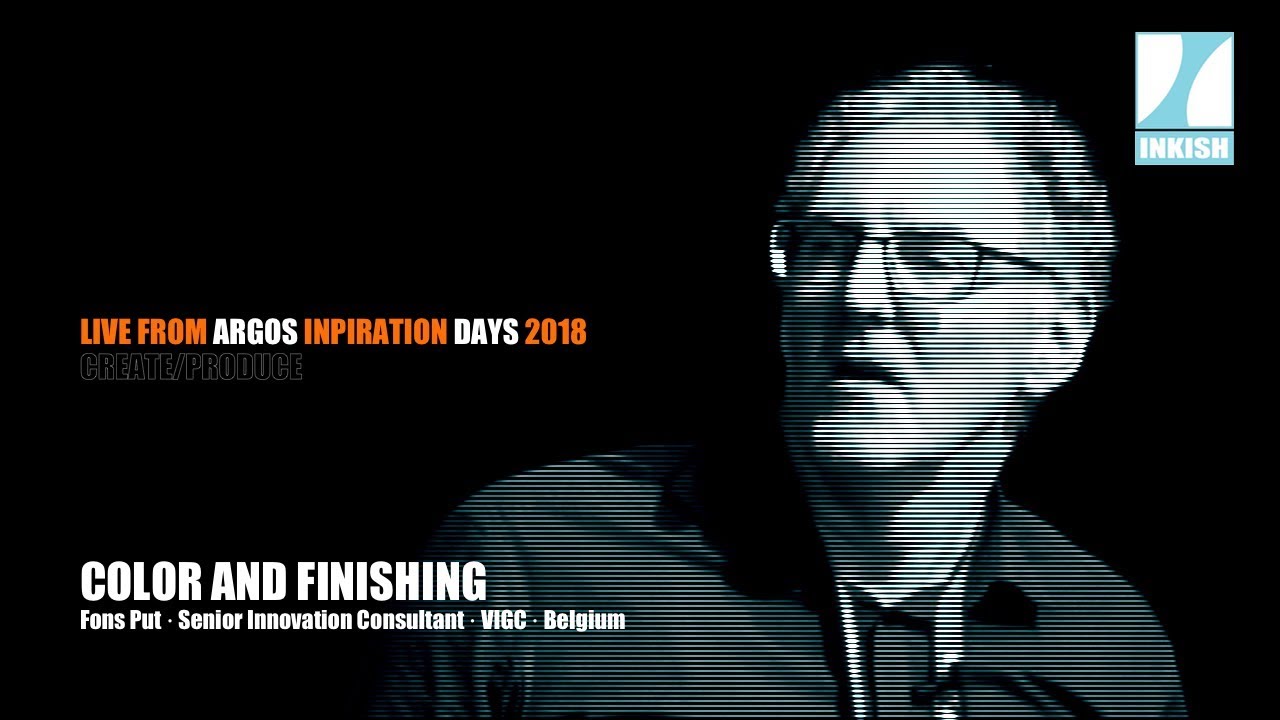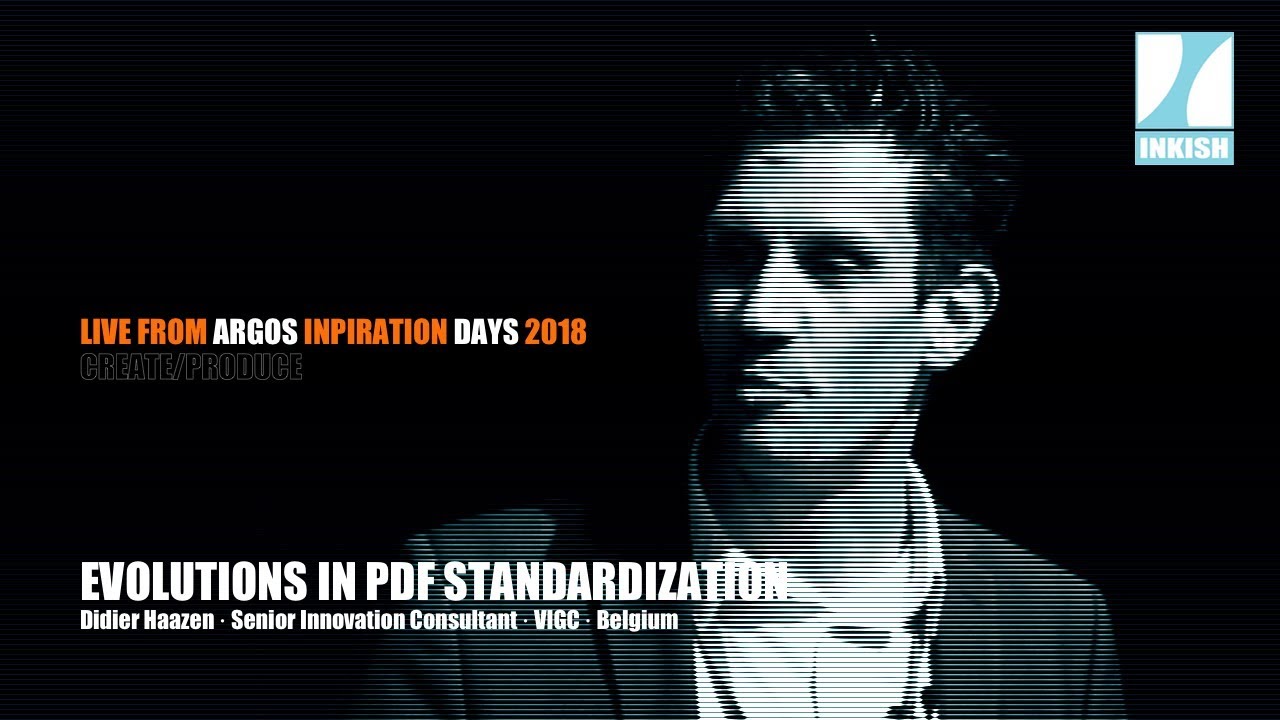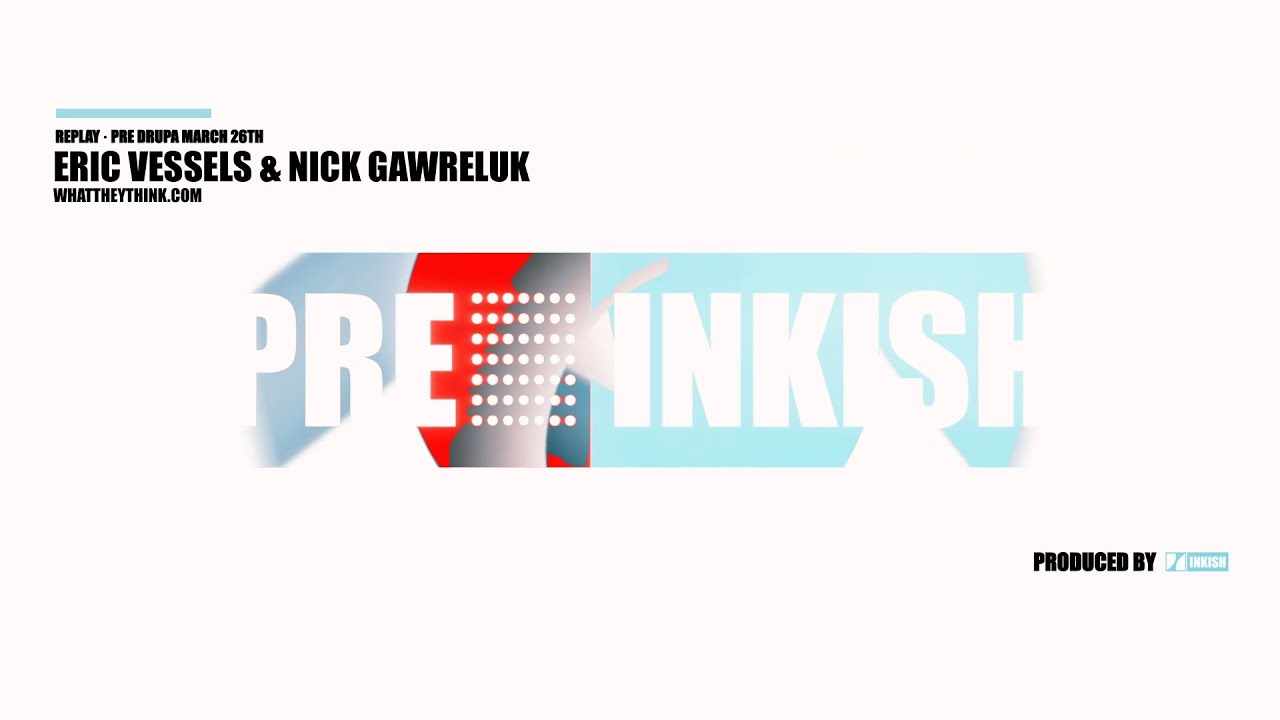Public Procurement is complicated and tedious, and many printers simply have given up on selling to public companies and organizations. Things are not always easy and here is an insight into how Public Procurement is seen from the buyer’s side and how the city of Antwerpen has streamlined their buying process.
Here Director of Media & Communication Joris Heirbaut presents the route from then to now – enjoy!
For the second part, we are going to start with the city of Antwerp, and that’s. This isn’t enough. It’s a region within the European community. It’s proven by the city of Antwerp. Antwerp currently cones 512,000 inhabitants. It’s one of the big Belgium touristic cities and many people study and work in the city of Antwerp. How do you inform, inform all of those categories in one of the biggest challenges for our next speaker Joris Heibaut?
He’s director of media and communications of the city of Antwerp. The city of Antwerp developed immediate strategy to ensure that the right message was delivered to the right audience at the right time. The city focus its strategy on digital communication channels. Despite the apparent success of this choice, printed communications also remain a key element in the media mix used by the city of Antwerp. How does the city of Antwerp go about purchasing its plant efficiently? When you know that every government organizations is born to respect all kinds of purchasing lost, this is no easy task. But yours and his team found a way to overcome all of those issues. So I ask a warm welcome to yours habits.
Good after – Is this on? Yes. Okay, good afternoon everyone. My name is Joris Heibaut, and, as I was introduced, I’m working for the city of Antwerp. I’m working there now for six years. Before I had a career in agency; in agencies. So I’m a public servant. Are there any other public servants over here? Oh … one, two … that’s something.
So I’m the second speaker which is actually not in the graphic industry; but anyhow, I would, like, as was announced bring a story on how we procure print these days in Antwerp. 512,000 people living in Antwerp that are my daily clients, as a matter of fact, and Antwerp is a fantastic product to work for. And therefore, let’s have a look at this video. I hope it works and you can see what the product is I’m working for.
So that’s one introduction of the product I’m working for. We have a marketing strategy and that’s a very simple one. The marketing strategy, our baseline, is just we want you with us. It’s very clear. We addressed to a number of groups, especially to entrepreneurs, to business, to students, to the academic life; we call it brains. We want people to come visit Antwerp; to shop in Antwerp, but most of all, we also want our citizens, our inhabitants, to live a good life in Antwerp. So, we want them with us. And, actually, we need to communicate with them as well.
We have two kinds of communication actually in Antwerp, and the first one is the less interesting one … does … we have a legal obligation actually to communicate any kind of decision the city government or a district government is taking. Most of the time, we do this just on digital. That is actually the marketing communication you might know. So the marketing communication, actually our goal is to inform, synthesize or introduce all these different target groups or audiences so they feel involved and they are willing actually to participate in the city community. So, as for communication, we have quite some different needs for different target audiences and we use plenty of channels, so different … for to communicate different messages.
We have one corporate brand, that’s the red square with a white “A” and orange rays. We have kind of a complicated brand architecture. You might see some extra elements to our logo, but the most important message I would like to bring here is that we are a decentralized organization. Actually, as is listed up there, we have a lot of, as I would call them, city entities, that communicate one-on-one with their audiences. So we have districts, we have labor consoles, we have the police, we have schools, we have teachers, we have swimming pools, we have all kinds of counter and services. And actually, what we do is we decentralize communication, responsibility and all these entities they communicate one-on-one with your audience, because they know their audience at the best, we believe. So, the big challenge is, indeed, to communicate the right message at the right time to the right audience.
And in our media mix, we believe that we can solve a lot of … we can cope with this challenge to go … to go off to make a choice for digital. We have like 20, 25 websites in the air. If it comes to social media, we have more than 150 social media channels to manage. That’s a lot. But in this, in addition, we also do print. We know that still a lot of people don’t cope with digital and we have to communicate to each and every one; so to these 512,000 people. There are people with low language skills, some people are not … or some citizens are not yet digitalized. People live, also, in deprivation. So we’ve seen that just print communication on paper does the job there. But on top, we also do outdoor complaining is very often events related. We dressed the city with big events.
If there’s very small local communication, we put letters in the doors in the letter boxes. We have city magazines and, on top, we also have a lot of functional print, stationary; but also tax forms, penalty forms, course material. So, this makes a lot of print in total. And if you can, as you can see, actually this over the last three years; if it’s just marketing communication. We had about 3000 different titles of print, and last year it was a bit less. If it comes to, then you see that we print over 100 done in 2016. So there’s quite a lot. And if it comes to spending; we spend … it’s more than 1 million euro in 2016; 893,000 euro last year. We have to buy print. And if you’re working for a legal … a public legal entity, that’s not so easy, because we’d just go on the markets.
We’re restricted by a number of laws and rules. The basic rule is that if we buy it, there should be equality and transparency. So if we put a tender into the market, all tender should stand equal, a chance. If there’s any change that’s communicated to one tender, it should be communicated to each tender. We have an e-procurement procedure for print if it goes up to 20,000 euro and we also have a system which we call the public report of , once you win a tender, then can you get this reward; award report and you will understand why you won or why you lost. The tender is mostly awarded to the most economically adventurous tender. What does this mean? A lot of people think this is just price related. It’s not the case. Actually, we can determine a number of criteria such as price, quality, action plan, lead time, sustainability responsibility, and the offer; we scored this by percentage. For instance, the price would be 30 percent … quality 30 percent and the other four points 10 percent. And the offer with the highest total score; that party will win the tender.
I’m often asked why does the city not to shop on the web? Well, we cannot shop on the web because that stands against two principles of the equality and the transparency. And um, most of the time a lot of shops are, especially if you see all these … these entities within the city, they would … possibly they could go on a web shop for print. But financial flows are very difficult then because, for instance, often you are asked to have a credit card; but in the city there are no credit cards. In 2002, I believe, we had a crisis, VISA crisis in Antwerp. And ever since there’s no credit cards available anymore within the city.
How we used to procure print then, often the elephant is eaten in pieces, we call this the Salami technique. Actually, what we do is you have like a municipal entity When it’s an offer or a job at below 20,000, 22,000K Euro, we just put an offer request in the market. We sent this to three companies. They each offered their price offer. We make up an art report. We put the offer in our SAP flow and we order the print shop.
That’s is a good way of working because you have great flexibility in timing, you can take advantage of promotions or you can, actually, look to two different products so, you have a great flexibility and freedom, but it’s quite time consuming because for every order that actually you have to make up this process. Especially for repetitive orders, this is not very budget friendly and it’s also hard to build up this relationship with printing companies and it’s also hard to some quality standards.
If we some have some repetitive printed material, then most of the time this for a budget above 20,000, 22,000 euro. Then the procurement entity of the city will put a big e-procurement tender in the market. And any company, printing company interested can put this offer. We get different offers. We make a reward report making that work a report again. We put, actually, the winning offer into our SAP flow. And then, each municipal city again, start with ordering repetitive print orders.
There are also some pros for this. This is, again, because we have a framework, a contract. This is time-saving, it’s more budget-friendly, but the problem here is that you’re stuck to fixed prices for several years; and that’s a bit of a problem because, as we heard this morning, prices are evolving and we cannot take any kind of advantage of this evolving prices. Also, most of the time, if you have like a framework contract, it only fits the needs of one municipal entity. Then four years ago actually, we decided to put a big tender in the market for a large set of printed materials. Again, big tender … then several printing companies put their price. We made a Heibart report and this time we also asked actually, we … as a requirement in the tender, we ask for a web shop. So the winning printed company offered us a web shop, [00:14:53] and any municipal entity could actually put this order into this web shop.
Again, this web shop was connected with our SAP financial flow and we were ongoing for four years; very nice for us because again, time-saving, this time you work with a printing company; you can set up some quality standards, ecological criteria, etc. But you commit yourself for four years to one printing company. So you don’t take advantage of … price evolvement; we don’t take advantage of any kinds of new technologies, and also your stuck to a line up for several years.
Okay. So, beginning of 2017, we all give this rethought and we wanted to actually to procure our print in a different way. So we had a wishlist list. First of all, we would like to have a broad range of printed materials. So any kind of printed material would have to be in the contract that we would start up.
So also we would like to have a product lineup because communication is changing and this means that for a period we need this certain product, but after a while we need again, another product. As I said before, prices is indeed … or pricing is indeed very important to a public government … Some good, reliable quality and fast production lead times. And actually we thought that we should have a kind of mini competition between several printing companies on a half yearly date of half yearly so that we could update our products and prices. And also, next to the wishes for the printer or the printing companies we needed a web shop. Actually, a web shop that is not … does not belong to the printing company, but print shop that is over own that we can manage ourselves, that we can actually, the output of that can be linked, then, with several printing companies; also can be linked with our SAP financial flow; and also could be used for other products. We buy print, but we also buy translations. We buy adding … editing, copywriting; we buy photography.
Okay. And this would then be the ideal flow that any municipal entity could go through; this general order … this print web shop … actually put in some SAP data. Which processes to print order and that it would be printed by company one, two, or three, but actually the user does not know where it is printed. To the user it doesn’t matter whether it’s printed by company one, two, or three. We have several companies behind one front store. We would have them delivering and invoicing.
Okay, so I’m actually what we needed to fulfill this ideal flow was a pool of printing companies that are actually willing to join this new way of procurement and also willing to join this mini competition we would organize every half year. And we needed a closed white label web shop that would offers the requested flexibility.
So we had a first tender to actually compose this pool, this pool of printing companies. In the end, we contracted 20 printing companies for four year and we organized now … or we are going to organize now, for the second time, this mini-competition and a company “X” can win a mini-competition for product “X” within a certain category; but, at the same time, company “Y” could the mini-competition for within the same company. So again, users don’t know where their product is printed. That’s all behind the scenes.
Okay. And then we needed white label shop. There was, first of all, by our partner [DE Publis 00:19:22], was taking care of all IT material … or IT hardware and software for city of Antwerp. They put this challenge in the market. There was a selection of tendering with white shops, of course, with the specific know how for print, some negotiation, and the final offer. And in the end, we contracted the industry for four years.
And then we had to bring this altogether last year in … I believe it was November/December, that we did actually start testing; but we had to organize these mini-competitions. We have to set up the web shops. There are more than 200 products and more than 400 individual users that will have different kinds of. Also, they cannot order any old products; some have just limited access to the web shop. Within the city, there are several SAP flows. Also, this has to be linked. The output of the web shop had to be integrated, but a working flow of the selected printing companies in the pool. We had to train … to inform users and then, the testing and in the end, we got live within five months after.
Since January, I think we have been already processing more than 1000 print orders through this web shop. That’s what it looks like in the front end. It’s just a ordinary print web shop, but behind the technology, or the way we actually organized the workshop, is quite different from what we used to do. So, that’s my story and I like to end with the slides as a public service. I’m always at your service. Thank you.






























